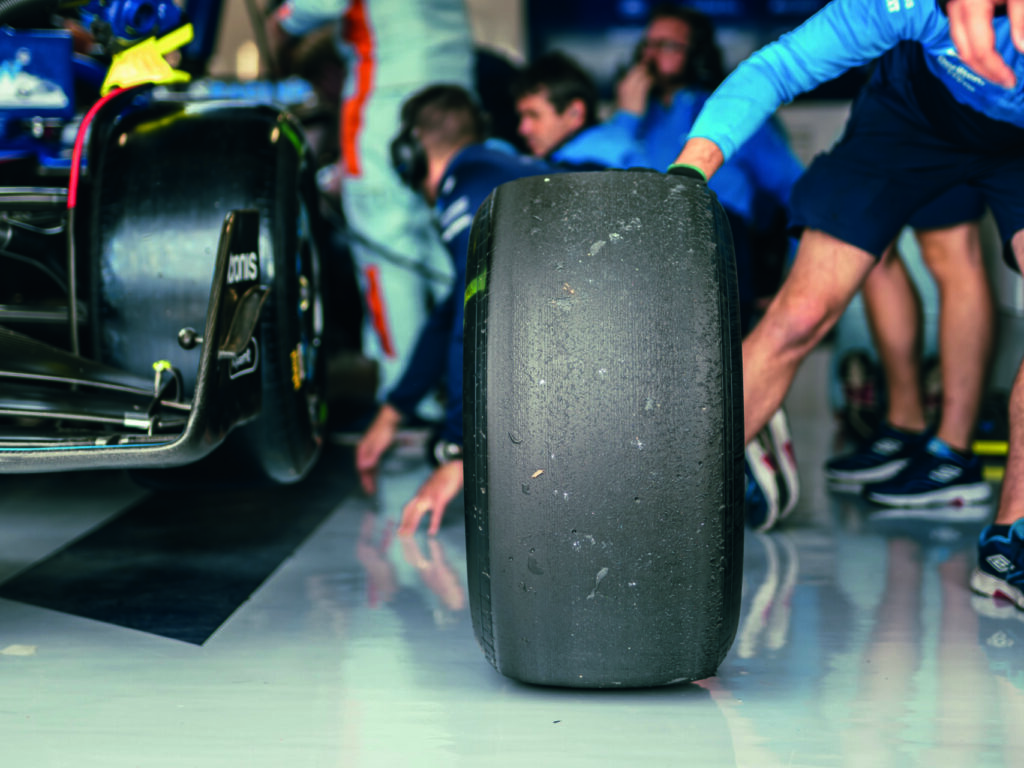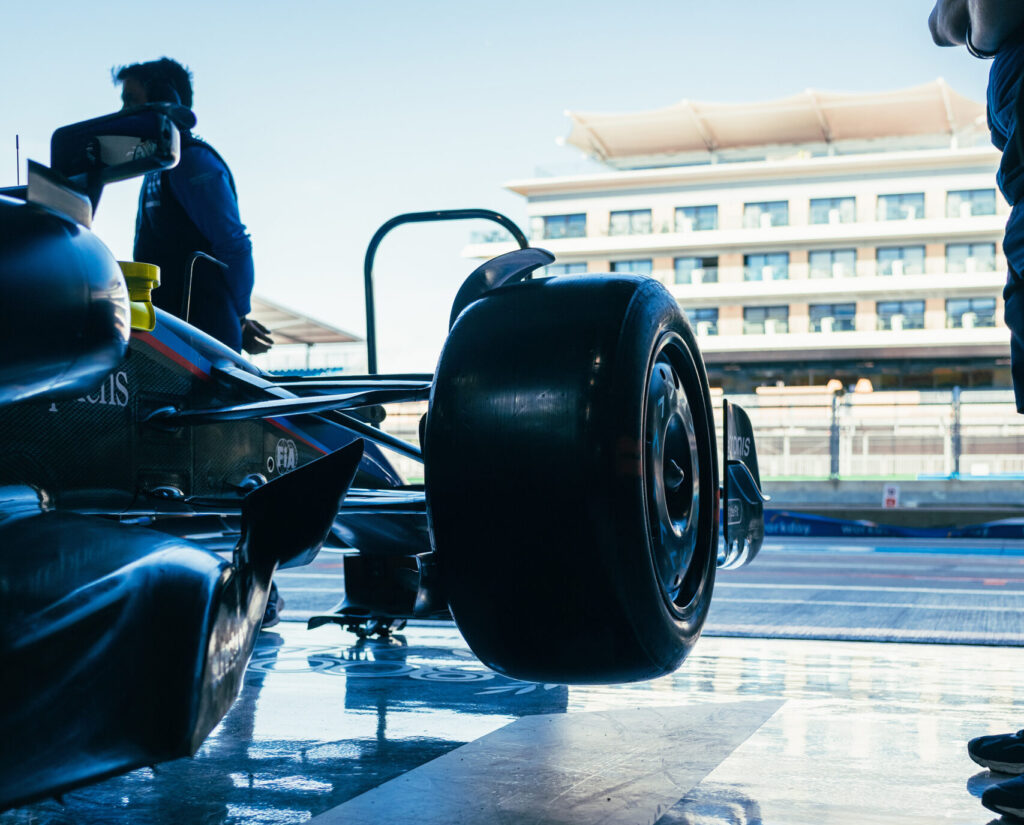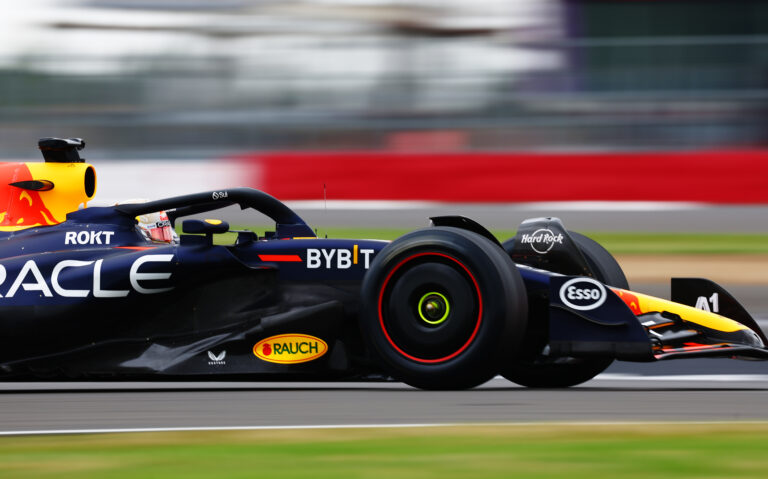TTI headed to Silverstone to meet the Pirelli team undertaking mid-season testing of new constructions and compounds designed to keep F1 at the cutting edge of global motorsport entertainment
Formula 1 tire supplier Pirelli is in an unenviable situation. On the one hand, it is tasked with creating tires that help ‘improve the show’ – they must degrade over a race distance yet still be capable of safely enduring the ferocious lateral and vertical loads produced by an F1 car. On the other, Pirelli engineers must account for car development across a year – performance at the end of a season is always greater than at the start. Tire constructions and compounds must be concocted with a degree of conservatism, but still adhere to the aforementioned ‘show’ requirements.
Too conservative an approach will lead to predictable races. Not conservative enough, however, and tire failures become an issue – Pirelli has been subject to its share of bad press over the years, most recently at the Qatar GP in October 2023. There, issues with the separation of tread and carcass over long runs led to the FIA mandating that teams change tires three times during the race.
To help it keep ahead of dramas such as this, Pirelli is constantly developing its compounds and constructions and, where possible, testing them in real-world conditions on current cars.
A good example of this process was highlighted at the British GP in July 2023, where Pirelli introduced a new slick tire, developed with an eye toward 2024 – the year in which teams had been informed they must run without tire warming blankets (though this switch has now been postponed until at least 2025).
The tire featured the same compounds that were run for the rest of the season, but with a new construction. According to Pirelli motorsport director Mario Isola, “The new specification gives the tire extra resistance against fatigue but does not affect any technical parameters or its behavior on track.”
Quantifying subjective feel
Speaking to TTI, Pirelli chief engineer Simone Berra highlighted that track testing under what are effectively competition conditions is challenging, and it can be hard to differentiate between tire-related and other performance factors. At Silverstone, the first day’s running on the new tires prompted comments from drivers that grip levels were lacking compared with the previous specifications.
“Those comments about the grip were more related to the track conditions,” noted Berra. “Even the wind intensity, with gusts up to 25-30km/h, affected the stability of the cars considerably.”
Silverstone, with some of the highest corner speeds on the calendar, is described by Berra as the “most stressful track of the season”.
“It is very important to have a structure that supports the car well. We have seen an increase [in excess] of 15% [in loads] on the front and rear axle compared with 2022.” Despite this ramp-up in car performance, the new structure enabled Pirelli to specify a minimum operating pressure similar to the previous year. “That means the new structure is more reliable,” Berra said.
Tire pressures are something of a contentious subject in F1, with teams keen to run as low as possible. However, the FIA mandates that they stick to Pirelli’s recommended pressures to mitigate the potential for failures. Berra noted that Pirelli could simply have specified higher pressures to account for the greater loads, but opted to develop the new structure instead: “We thought it was better not to increase pressures too much for the benefit of the sport.”

Contemporaneously with the introduction of the new construction, Pirelli also tested new compounds designed to complement the revised construction and obviate the need for heating blankets.
“The plan is to test the compound to see if it can work with just an out lap [and get to the correct operating temperature] and no blankets,” said Berra. “Now we have a good base for the structure, the focus is on the compound range, with just some fine-tuning of the structure.”
The tender requirement that Pirelli has to meet determines that there is a set performance degradation for each compound – for example, the medium compounds drop performance at a rate of 0.05 seconds per lap.
“What was a challenge was to keep the same level of degradation [with the new compounds],” said Berra. “That meant we have to improve the warm-up without decreasing performance over longer runs.”
Unsurprisingly, Berra was unwilling to provide much detail on the specifics of compound development but did admit that Pirelli was working with “innovative” new materials to achieve the desired results.
Two-way conversation
Berra highlighted the importance of a close feedback loop with teams. Track testing is limited, and Pirelli relies heavily on simulation data provided by teams to inform its development decisions. When the opportunity arises to validate these in real-world tests, it’s crucial to harvest as much data as possible.
“We work with the teams to evaluate temperatures, carcass temperatures, primary stiffness and so on, to try to create the metrics we need to evaluate the tires in that warm-up phase,” Berra explained.
Berra and his engineers also study how the tires behave throughout a stint, including how the balance of the car alters, via team telemetry data.
“We are looking at things like overheating, thermal degradation and cornering stiffness degradation, to see if the new compounds are working well – both in terms of the warm-up and not degrading too much.”

There is something of a diplomatic line to be walked during this process, as each tire test takes place with a single team, which changes from test to test.
“It means we are not starting from zero each test,” said Berra. “We have to let the team know what we have learned, but not impart confidential data from the previous test, so that we are ensuring continuity.”
When a new compound or construction is introduced, as was the case at Silverstone, teams are keen to obtain data for their in-house tire models as far in advance as possible. According to Berra, the initial data was supplied to teams as soon as the FIA agreed on the introduction of the new tires.
“We had a data package that we provided to the teams. We then went and worked more on the tire model we provided to the teams, but it required a bit more effort from our modeling department, and that was released a couple of weeks before the race.”
The performance requirements for a Formula 1 tire are extremely specific, but Berra suggested that some of the lessons learned can still be fed into mainstream production.
“We have new materials, for example in the plies and belts, which can be applied to raise the performance of normal production car tires.”



